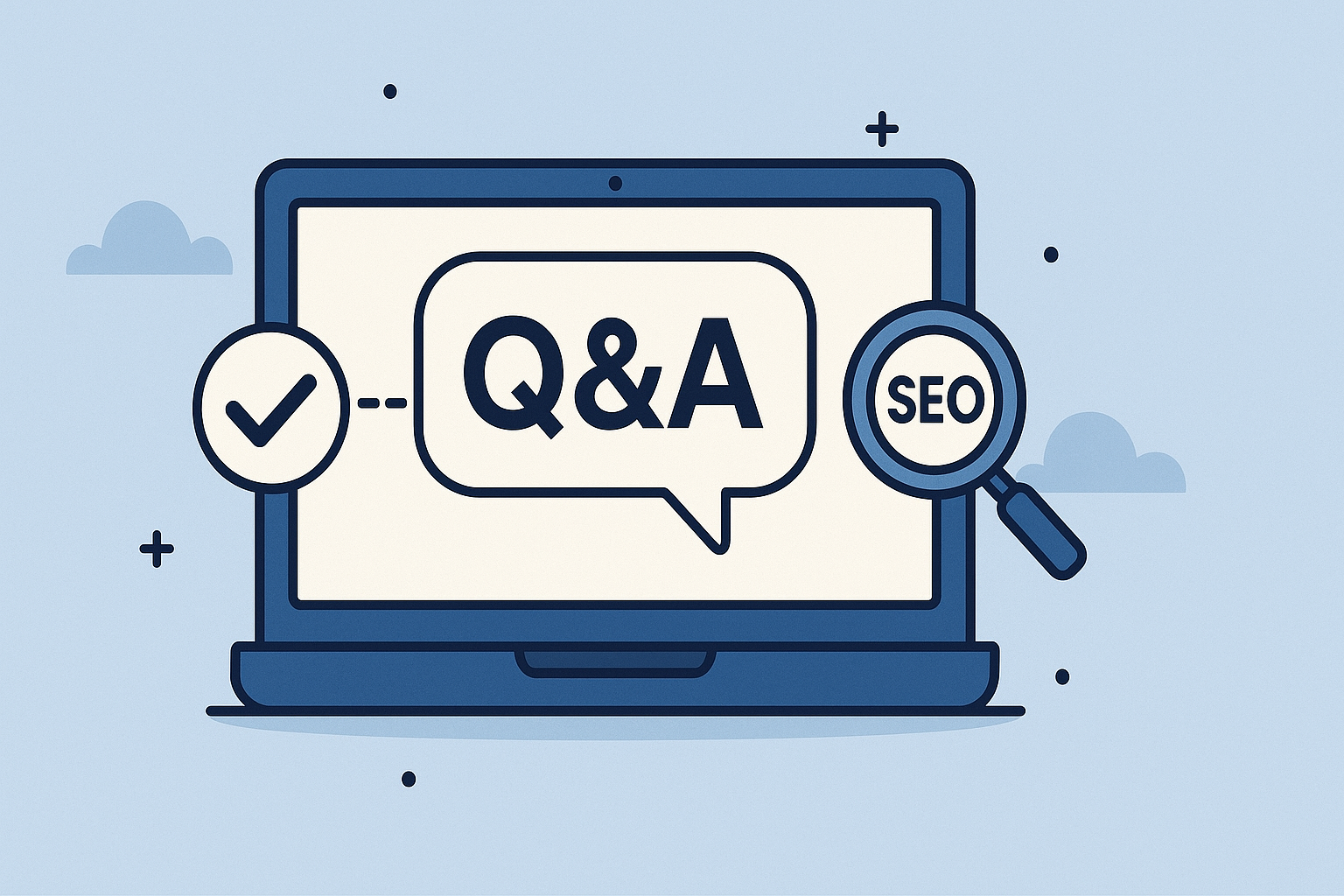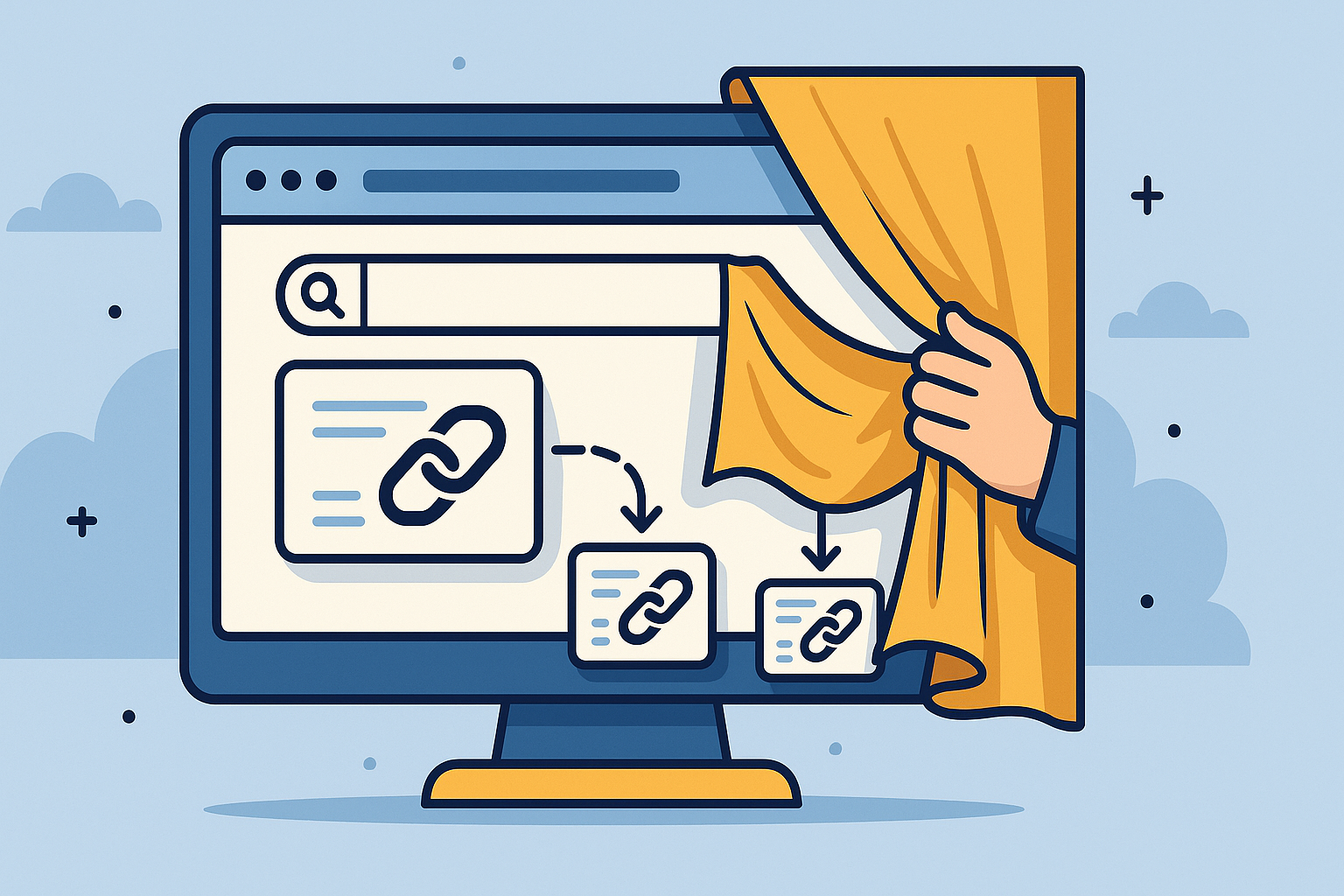Fast fonts, better conversions : how to optimize fonts in WordPress

You've spent hours perfecting your website design, choosing the perfect fonts that embody your brand. Your site looks stunning... but it takes 6 seconds to load.
Your beautiful typography might be costing you 20% of your conversions, and you don't even know it. 😱
As someone who's optimized websites across 30+ countries, I've seen how poor font optimization can destroy performance metrics.
A single unoptimized Google Font can add 2-3 seconds to your load time and cause significant layout shifts that frustrate users, and hurt your search rankings.
Yet font optimization remains an overlooked aspect of WordPress performance.
While most site owners focus on image compression and caching, they ignore the fact that fonts can account for up to 15% of a page's total weight and directly impact all Core Web Vitals.
Here's the good news: font optimization offers some of the highest ROI improvements you can make.
I've seen WordPress sites jump from 60 to 95+ PageSpeed scores just by implementing the strategies in this guide. 📈
While this guide focuses on WordPress, these font optimization principles apply to most CMS platforms including Shopify, Drupal, and Webflow.
The techniques you'll learn here are universal – it's just the implementation methods that vary by platform.
The hidden cost of WordPress fonts
Most WordPress users don't realize that their fonts are performance killers. Let me break down the real impact with concrete numbers from my experience optimizing high-traffic sites.
Performance impact: the numbers don't lie
Loading time penalties:
- Each Google Font family adds 50-200ms to your load time
- Font variations (bold, italic) can double that impact
- Self-hosted fonts without optimization: 300-500ms additional load time
- Multiple font families: potentially 1-2 seconds of delay
Core Web Vitals impact:
- Largest Contentful Paint (LCP): Fonts can delay text rendering by 500ms-2s
- Cumulative Layout Shift (CLS): FOIT/FOUT causes layout jumps of 0.1-0.3
- Interaction to Next Paint (INP): Heavy font loading blocks user interactions
Mobile performance hit: On mobile connections, font performance issues are amplified by 2-3x. A font that adds 200ms on desktop might add 600ms on a slow 3G connection ! 📱
Business impact: what this costs you
Through my work with e-commerce and media sites, here's what poor font performance actually costs:
Conversion rates:
- 100ms improvement in load time = 1% increase in conversions (Walmart data)
- Sites with optimized fonts see 15-25% better conversion rates
- E-commerce sites lose an average of $2.6M annually per 100ms of delay
SEO rankings: Core Web Vitals are ranking factors. Poor font optimization can hurt your search visibility, especially in competitive niches where performance differences matter.
User experience metrics:
- Bounce rate increases by 32% when load time goes from 1s to 3s
- 53% of mobile users abandon sites that take over 3 seconds to load
- Layout shifts from font loading create negative user experience
The bottom line: font optimization isn't just about technical metrics – it's about revenue, user satisfaction, and search performance. 💰
WordPress font loading: what really happens
To optimize effectively, you need to understand what happens when fonts load on your WordPress site. Most performance issues stem from how browsers handle font requests.
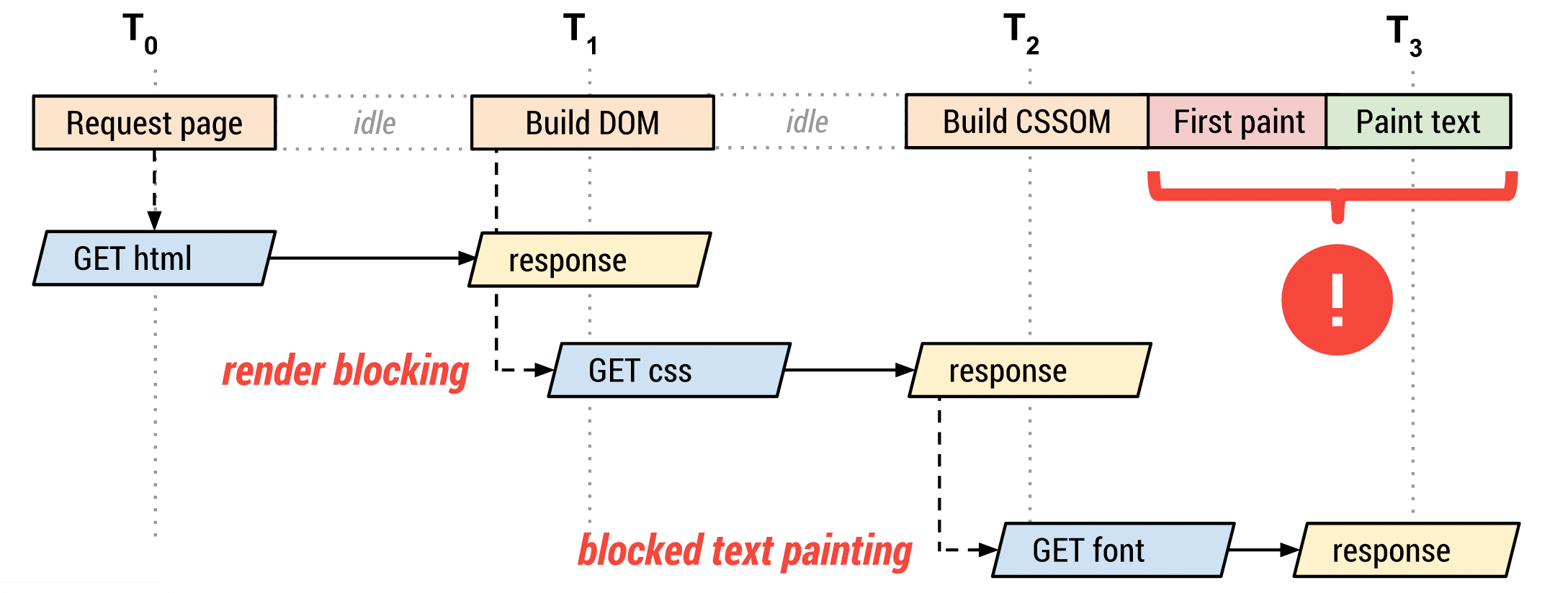
The font loading journey
Step 1: HTML parsing When a browser loads your page, it discovers font references in your CSS or HTML. This might be a Google Fonts link in your theme's header or a font-face declaration in your stylesheet.
Step 2: Font fetching The browser requests the font files. For Google Fonts, this involves:
- DNS lookup to fonts.googleapis.com
- Request to font CSS file
- Parsing CSS to discover actual font URLs
- Additional requests to fonts.gstatic.com for font files
Step 3: Font rendering Here's where things get tricky. Browsers handle font loading differently:
- FOIT (Flash of Invisible Text): Text stays invisible until fonts load
- FOUT (Flash of Unstyled Text): Fallback fonts display first, then swap to web fonts

Common WordPress font setups and their problems
Google Fonts via theme/plugin (most common)
<link href="https://fonts.googleapis.com/css2?family=Roboto:wght@300;400;700&display=swap" rel="stylesheet">Problems: External requests, no preloading, potential render blocking
Multiple font sources Many WordPress sites accidentally load fonts from multiple sources:
- Theme fonts
- Plugin fonts (page builders, forms)
- Google Fonts from different plugins
Result: Duplicate requests, conflicting font loading strategies
Unoptimized font-face declarations
@font-face {
font-family: 'CustomFont';
src: url('font.woff2');
/* Missing font-display property */
}Problem: No fallback strategy, causes FOIT
Understanding FOIT vs FOUT
FOIT (Flash of Invisible Text)
- Text remains invisible while fonts load
- Creates poor user experience
- Hurts LCP scores
- Default behavior in Chrome/Firefox
FOUT (Flash of Unstyled Text)
- Shows fallback fonts immediately
- Swaps to web fonts when loaded
- Can cause layout shifts (CLS)
- Default behavior in Safari
The key is controlling this behavior rather than leaving it to browser defaults. ⚡
Quick wins: 5-minute font optimizations
Let's start with optimizations you can implement immediately, regardless of your technical skill level !
Level 1: Immediate fixes (0-5 minutes)
1. Add font-display: swap to control font rendering
This is the fastest way to improve your font loading experience:
For Google Fonts (easiest method): Change your Google Fonts URL from:
<link href="https://fonts.googleapis.com/css2?family=Roboto:wght@400;700" rel="stylesheet">To:
<link href="https://fonts.googleapis.com/css2?family=Roboto:wght@400;700&display=swap" rel="stylesheet">For custom CSS:
@font-face {
font-family: 'YourFont';
src: url('font.woff2') format('woff2');
font-display: swap; /* This is the key addition */
}Using plugins: Install the OMGF (Optimize My Google Fonts) plugin, which automatically adds font-display: swap to all Google Fonts.

2. Preload critical fonts
Preloading tells the browser to download important fonts immediately:
<link rel="preload" href="https://fonts.gstatic.com/s/roboto/v30/KFOmCnqEu92Fr1Mu4mxK.woff2" as="font" type="font/woff2" crossorigin>In WordPress functions.php:
function preload_fonts() {
echo '<link rel="preload" href="https://fonts.gstatic.com/s/roboto/v30/KFOmCnqEu92Fr1Mu4mxK.woff2" as="font" type="font/woff2" crossorigin>';
}
add_action('wp_head', 'preload_fonts');Pro tip: Only preload fonts used above the fold (headers, navigation, hero text). 🎯
3. Implement the 2-font rule
The rule: Limit your site to maximum 2 font families:
- One for headings
- One for body text
Why it works:
- Reduces HTTP requests
- Faster load times
- Better design consistency
- Easier maintenance
WordPress audit process:
- Check your theme's typography settings
- Review active plugins for additional fonts
- Use browser DevTools Network tab to see all font requests
- Remove unnecessary font variations and families
Level 2: WordPress-specific optimizations (5-15 minutes)
4. Self-host Google Fonts with OMGF plugin
Self-hosting eliminates external requests and gives you complete control.
Install OMGF Plugin:
- Go to Plugins → Add New
- Search "OMGF Host Google Fonts Locally"
- Install and activate
Configuration:
- Navigate to Settings → Optimize Google Fonts
- Click "Start Optimization"
- The plugin automatically:
- Downloads Google Fonts locally
- Updates CSS references
- Adds font-display: swap
- Blocks external Google Fonts requests
Manual method using Google Webfonts Helper:
- Visit https://gwfh.mranftl.com/fonts
- Select your font and desired styles
- Download the font files and CSS
- Upload fonts to your theme's
/fonts/directory - Add the CSS to your stylesheet
5. Remove unused fonts and variations
Theme cleanup:
// Remove unused Google Fonts from theme
function remove_google_fonts() {
wp_dequeue_style('google-fonts'); // Common handle name
}
add_action('wp_enqueue_scripts', 'remove_google_fonts', 100);Plugin cleanup:
- Use Asset CleanUp plugin to disable fonts on specific pages
- Check page builders (Elementor, Gutenberg) for font settings
- Review form plugins that might load custom fonts
Font variation audit: Only load weights you actually use:
/* Instead of loading all weights: */
@import url('https://fonts.googleapis.com/css2?family=Roboto:wght@100;300;400;500;700;900');
/* Load only what you need: */
@import url('https://fonts.googleapis.com/css2?family=Roboto:wght@400;700&display=swap');Advanced font optimization strategies
Ready to take your font performance to the next level ?
These strategies require more technical implementation but offer significant performance gains. 🚀
Level 3: Performance-focused optimizations (15-30 minutes)
1. Font subsetting for faster loading
Font subsetting removes unused characters to reduce file size by 50-80%.
What is subsetting: Instead of loading the entire font (which includes characters for multiple languages), you only load the characters your content actually uses.
Google Fonts subsetting:
<!-- English + Latin Extended only -->
<link href="https://fonts.googleapis.com/css2?family=Roboto:wght@400;700&subset=latin,latin-ext&display=swap" rel="stylesheet">Custom font subsetting tools:
- Glyphhanger: Command-line tool for precise subsetting
- FontSquirrel Webfont Generator: Browser-based subsetting
- Fonttools: Python library for advanced font manipulation
Implementation example:
# Install glyphhanger
npm install -g glyphhanger
# Generate subset based on your content
glyphhanger --subset=*.woff2 --formats=woff2 --whitelist=U+20-7E2. Variable fonts implementation
Variable fonts contain multiple styles in a single file, potentially reducing total font weight.
Benefits:
- One file instead of multiple weights
- Smooth weight transitions
- Better design flexibility
- Reduced HTTP requests
CSS implementation:
@font-face {
font-family: 'InterVariable';
src: url('inter-variable.woff2') format('woff2-variations');
font-weight: 100 900; /* Supports full range */
font-display: swap;
}
.heading {
font-family: 'InterVariable', sans-serif;
font-weight: 650; /* Any value between 100-900 */
}WordPress considerations:
- Not all browsers support variable fonts (provide fallbacks)
- File sizes can be larger than single weights
- Test performance impact on your specific use case
3. Critical CSS for fonts
Inline critical font CSS to eliminate render-blocking requests.
Extract font CSS:
/* Inline in <head> for above-the-fold fonts */
<style>
@font-face {
font-family: 'Roboto';
src: url('/fonts/roboto-400.woff2') format('woff2');
font-weight: 400;
font-display: swap;
}
</style>Async load non-critical fonts:
// Load additional font weights asynchronously
function loadFonts() {
const link = document.createElement('link');
link.href = '/css/fonts-extended.css';
link.rel = 'stylesheet';
document.head.appendChild(link);
}
// Load after page interactive
if (document.readyState === 'loading') {
document.addEventListener('DOMContentLoaded', loadFonts);
} else {
loadFonts();
}Level 4: Expert techniques (30+ minutes)
4. System font stacks for maximum performance
System fonts load instantly because they're already installed on users' devices. ⚡
Modern system font stack:
body {
font-family:
-apple-system, /* iOS Safari */
BlinkMacSystemFont, /* macOS Chrome */
'Segoe UI', /* Windows */
Roboto, /* Android */
'Helvetica Neue', /* Older macOS */
Arial, /* Fallback */
sans-serif; /* Generic fallback */
}GitHub's approach:
.github-font {
font-family:
-apple-system,
BlinkMacSystemFont,
"Segoe UI",
"Noto Sans",
Helvetica,
Arial,
sans-serif,
"Apple Color Emoji",
"Segoe UI Emoji";
}When to use system fonts:
- Maximum performance is priority
- Clean, modern aesthetic works for your brand
- Mobile-heavy audience
- Content-focused sites (blogs, documentation)
5. Font metrics matching for layout stability
Prevent layout shifts by matching fallback font metrics to your web fonts.
The problem: Different fonts have different metrics (height, width, spacing), causing layout shifts when web fonts load.
The solution: Use CSS size-adjust to match fallback fonts:
/* Match Arial to your web font */
@font-face {
font-family: 'ArialFallback';
src: local('Arial');
size-adjust: 106.5%; /* Calculated to match your web font */
ascent-override: 95%;
descent-override: 25%;
line-gap-override: 0%;
}
body {
font-family: 'YourWebFont', 'ArialFallback', Arial, sans-serif;
}Tools for metric calculation:
- Fallback Font Generator: Automatic size-adjust calculation
- FontMetrics: Manual measurement tool
- Capsize: Utility for font metric matching
WordPress font optimization tools & plugins
The right tools can automate most font optimization tasks, saving you hours of manual work. 🔧
Recommended WordPress plugins
OMGF (Optimize My Google Fonts) - Top choice ⭐
What it does:
- Automatically hosts Google Fonts locally
- Adds font-display: swap
- Removes external font requests
- Provides detailed font management
Setup process:
- Install from WordPress repository (100% free)
- Go to Settings → Optimize Google Fonts
- Click "Start Optimization"
- Configure advanced settings if needed
Advanced features:
- Font preloading options
- Unused font removal
- Fallback font stack configuration
- GDPR compliance (important for EU sites)
Asset CleanUp - Font control
Best for: Removing fonts on specific pages
- Disable fonts per page/post
- Plugin-specific font blocking
- Detailed asset management
- Performance testing integration
Autoptimize - Font enhancement
Best for: Sites already using Autoptimize
- Font aggregation and minification
- Google Fonts optimization
- Async font loading
- Works with existing optimization setups
Beyond WordPress: CMS-specific tools
📝 Font optimization across platforms
- Shopify: TinyIMG, SearchPie for font optimization and Core Web Vitals
- Drupal: AdvAgg module, Blazy for advanced font loading strategies
- Webflow: Built-in font optimization features and performance settings
- Universal tools: Google Webfonts Helper, Font Squirrel work across all platforms
Performance testing tools
Core Web Vitals measurement:
- PageSpeed Insights: Google's official Core Web Vitals testing
- GTmetrix: Detailed font loading analysis
- WebPageTest: Advanced font waterfall analysis
- Chrome DevTools: Real-time font loading inspection
WordPress-specific testing:
- Query Monitor: WordPress performance profiling
- P3 Plugin Profiler: Identify font-loading plugins
- PageRadar: Continuous Core Web Vitals monitoring with font-specific insights
Font-specific analysis: Enable "Font loading" in Chrome DevTools Performance tab to see:
- Font discovery timing
- Font download duration
- Layout shift events
- Paint timing impact
Measuring font performance impact
You can't improve what you don't measure. Here's how to track the real impact of your font optimizations. 📊
Before/after metrics to track
Core Web Vitals improvements
Largest Contentful Paint (LCP):
- 🎯 Target: Under 2.5 seconds
- Font impact: 200-800ms improvement possible
- Measure: Time to render main headline/content
Cumulative Layout Shift (CLS):
- 🎯 Target: Under 0.1
- Font impact: 0.05-0.2 improvement with proper fallbacks
- Measure: Layout stability during font loading
Interaction to Next Paint (INP):
- 🎯 Target: Under 200ms
- Font impact: Reduced blocking for faster interactions
- Measure: Responsiveness during font loading
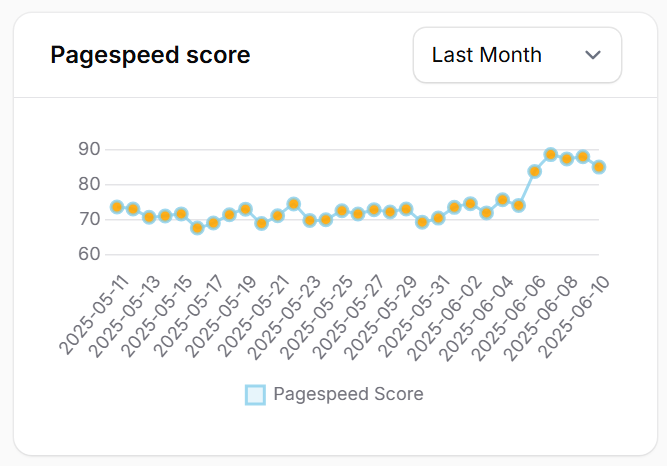
PageSpeed score improvements
Typical improvements after font optimization:
- Mobile scores: +10-25 points
- Desktop scores: +5-15 points
- First Contentful Paint: 200-500ms faster
- Time to Interactive: 300-1000ms improvement
Real user metrics (RUM)
Browser loading metrics:
- Time to First Byte (TTFB)
- Font loading duration
- Total blocking time
- Network request count
User experience metrics:
- Bounce rate changes
- Session duration improvements
- Conversion rate impacts
- Page views per session
Setting up continuous monitoring
Google Search Console: Monitor Core Web Vitals in real-world conditions:
- Go to Experience → Core Web Vitals
- Track improvements over time
- Identify pages still needing optimization
PageRadar for WordPress sites:
- Automated Core Web Vitals tracking
- Font-specific performance insights
- Historical performance data
- Alert system for performance degradation
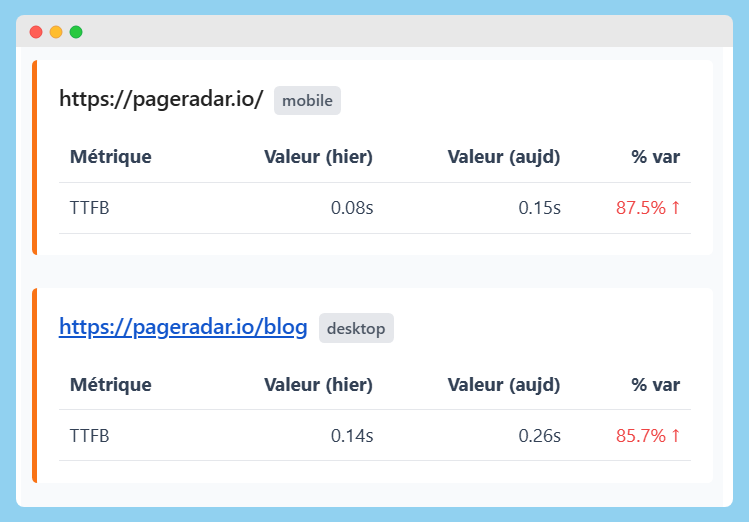
Custom tracking with Google Analytics:
// Track font loading performance
new PerformanceObserver((list) => {
for (const entry of list.getEntries()) {
if (entry.name.includes('font')) {
gtag('event', 'font_loaded', {
'font_name': entry.name,
'load_time': entry.duration
});
}
}
}).observe({entryTypes: ['resource']});Performance benchmarking
Create baseline measurements:
- Test before optimization (multiple times)
- Document current font setup
- Record Core Web Vitals scores
- Note user experience metrics
A/B testing font optimizations:
- Test system fonts vs web fonts
- Compare self-hosted vs Google Fonts
- Measure different font-display values
- Analyze business metric impacts
Font optimization by website type
Different WordPress sites have unique font optimization needs. Here's how to tailor your approach.
E-commerce sites: conversion-focused optimization 🛒
Priority metrics:
- Conversion rate impact
- Mobile performance (majority of traffic)
- Product page loading speed
- Checkout process smoothness
Optimization strategy:
/* Fast-loading product pages */
.product-title {
font-family: -apple-system, BlinkMacSystemFont, 'Segoe UI', sans-serif;
/* System fonts for instant loading */
}
.brand-heading {
font-family: 'BrandFont', -apple-system, sans-serif;
font-display: swap;
/* Custom fonts only for branding elements */
}Specific techniques:
- Use system fonts for product listings
- Limit custom fonts to headers and branding
- Optimize checkout pages for maximum speed
- Prioritize mobile font performance
Case study results: E-commerce sites implementing these strategies typically see:
- 15-30% improvement in mobile PageSpeed scores
- 8-12% increase in conversion rates
- 25% reduction in cart abandonment on mobile
Blog sites: reading experience optimization 📰
Priority metrics:
- Reading comfort and accessibility
- Content loading speed
- SEO performance
- Long-form content optimization
Optimization strategy:
/* Optimized for reading */
body {
font-family: 'Georgia', 'Times New Roman', serif;
/* Web-safe serif for excellent readability */
line-height: 1.6;
font-size: 18px;
}
.article-headline {
font-family: 'Roboto', -apple-system, sans-serif;
font-display: swap;
/* Custom fonts for headlines only */
}Content-specific optimization:
- Prioritize text rendering over decorative fonts
- Optimize for Core Web Vitals (ranking factor)
- Ensure excellent mobile reading experience
- Consider accessibility requirements
Business sites: brand vs performance balance 💼
Priority metrics:
- Brand consistency
- Professional appearance
- Lead generation optimization
- Cross-device consistency
Optimization strategy:
- Custom fonts for headers and branding
- System/web-safe fonts for body content
- Careful font loading prioritization
- Performance monitoring across pages
Implementation approach:
/* Strategic font usage */
.company-logo, .main-headline {
font-family: 'BrandFont', 'Helvetica Neue', sans-serif;
font-display: swap;
}
.content, .form-fields {
font-family: -apple-system, BlinkMacSystemFont, 'Segoe UI', sans-serif;
/* Fast-loading system fonts for functional content */
}Real-world success stories
Media site case study:
- Before: 4.2s LCP, CLS 0.23, 47 mobile PageSpeed
- After: 2.1s LCP, CLS 0.06, 78 mobile PageSpeed
- Changes: Self-hosted fonts, font-display: swap, reduced to 2 families
- Business impact: 32% increase in page views, 18% longer session duration
E-commerce case study:
- Before: 6.8s mobile load time, 34% cart abandonment
- After: 3.2s mobile load time, 26% cart abandonment
- Changes: System fonts for product pages, optimized checkout fonts
- Business impact: 23% increase in mobile conversions
Common font optimization mistakes
Avoid these pitfalls that can hurt performance or user experience. ⚠️
Technical mistakes
1. Over-optimization with system fonts everywhere
/* TOO AGGRESSIVE - removes brand personality */
* {
font-family: -apple-system, BlinkMacSystemFont, sans-serif !important;
}Better approach: Strategic mix of custom and system fonts
2. Ignoring font loading conflicts Multiple plugins loading the same fonts:
- Theme loads Roboto
- Contact form plugin loads Roboto
- Page builder loads Roboto Result: 3x duplicate requests
3. Bad fallback font choices
/* BAD - dramatic style differences */
font-family: 'Fancy Script Font', Arial, sans-serif;
/* GOOD - similar metrics and style */
font-family: 'Roboto', -apple-system, BlinkMacSystemFont, sans-serif;UX and design mistakes
4. Sacrificing readability for performance Using system fonts everywhere can make sites look generic. Find the balance between performance and brand identity.
5. Not testing on real devices Font rendering varies significantly across devices. Test your optimizations on:
- Various mobile devices
- Different operating systems
- Slow network connections
- Different screen sizes
6. Ignoring accessibility requirements
- Ensure sufficient contrast ratios
- Support browser zoom up to 200%
- Provide readable fallback fonts
- Consider users with visual impairments
Monitoring and maintenance mistakes
7. Set-and-forget approach Font performance can degrade over time due to:
- Plugin updates adding fonts
- Theme changes
- New content requiring different fonts
- CDN or hosting changes
8. Not measuring business impact Focus on metrics that matter:
- Conversion rates
- User engagement
- Search rankings
- Revenue impact
Regular monitoring with tools like PageRadar helps catch performance degradation before it impacts your business. 📈
Conclusion: your font optimization action plan
Font optimization is one of the highest-impact, lowest-effort improvements you can make to your WordPress site.
The techniques in this guide can improve your Core Web Vitals scores, boost conversions, and enhance user experience – often with just a few minutes of work.
Your step-by-step action plan
Immediate wins (Start today):
- ✅ Add
&display=swapto Google Fonts URLs - ✅ Install OMGF plugin to self-host Google Fonts
- ✅ Audit and remove unused font variations
- ✅ Limit your site to 2 font families maximum
This week:
5. ✅ Preload critical fonts used above the fold
6. ✅ Set up performance monitoring (PageRadar, Search Console)
7. ✅ Test Core Web Vitals before and after changes
8. ✅ Optimize for your specific site type (e-commerce, blog, business)
Advanced optimization (Next month):
9. ✅ Implement font subsetting if needed
10. ✅ Consider variable fonts for design flexibility
11. ✅ Test system font alternatives for body content
12. ✅ Set up continuous monitoring and alerts
Prioritization by site type
E-commerce sites: Focus on mobile performance and conversion impact 🛒 Content sites: Prioritize reading experience and SEO benefits 📚 Business sites: Balance brand consistency with performance gains 💼
Measuring success
Track these key metrics:
- Core Web Vitals: LCP, CLS, INP improvements
- PageSpeed scores: Target 90+ on mobile
- Business metrics: Conversion rates, engagement, revenue
- User experience: Bounce rates, session duration
The performance mindset
Font optimization isn't a one-time task – it's an ongoing process.
As you add content, install plugins, or update themes, your font performance can change. Regular monitoring ensures your optimizations continue delivering results.
The strategies in this guide have helped thousands of WordPress sites achieve better performance, improved user experience, and stronger business results.
Your fonts should enhance your brand, not hurt your performance.
Ready to see the impact?
Start with the quick wins today, measure your improvements, and gradually implement the advanced strategies.
Your users (and your conversion rates) will thank you. 🚀
Want to track your progress? Tools like PageRadar make it easy to monitor your Core Web Vitals improvements over time and get alerts if performance degrades. Because the best optimization is the one you can measure and maintain.
Additional resources:
This article was last updated on June 10, 2025, to reflect the latest WordPress and font optimization best practices.
